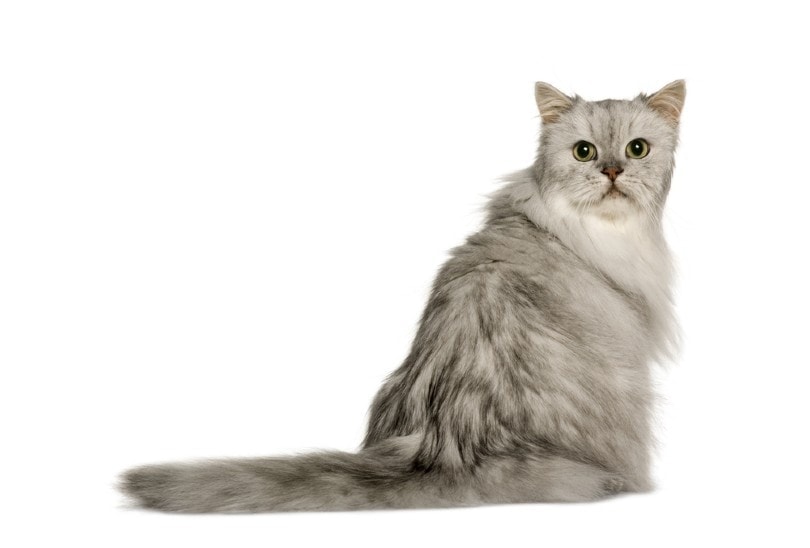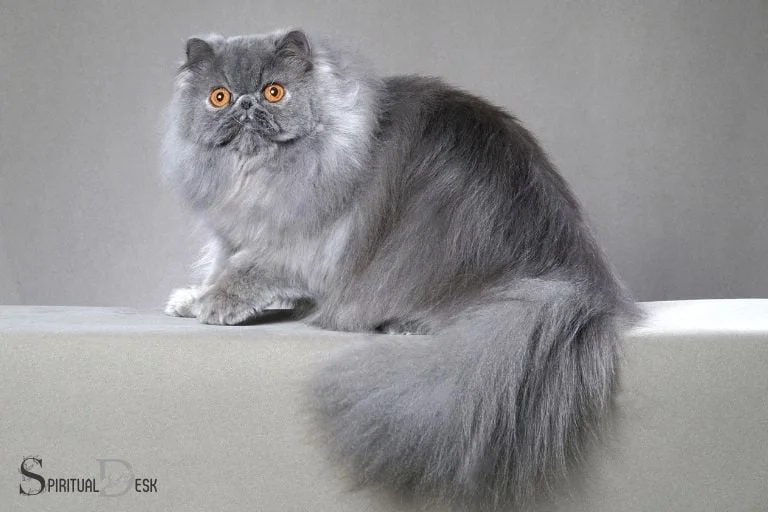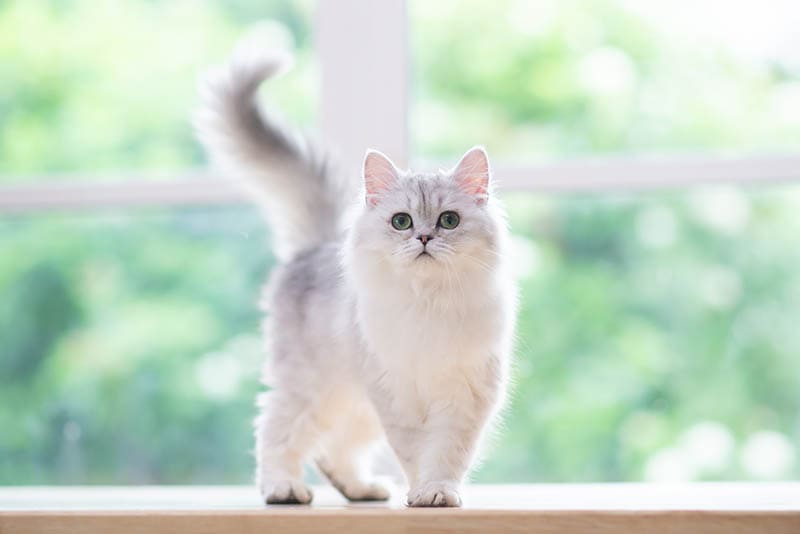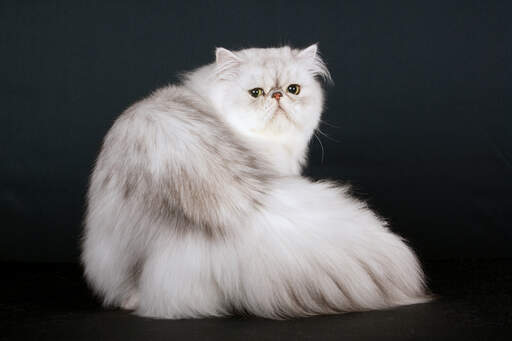If you’re seeking elegance and grace in a feline companion, look no further than the Silver Persian cat. With their luxurious silver coats and stunning features, these majestic creatures captivate the hearts of many cat lovers around the world. In this article, we will explore the allure of Silver Persian cats, delving into their unique characteristics, grooming needs, and temperament. So, whether you’re a passionate cat enthusiast or simply curious about these beautiful creatures, join us as we uncover the enchanting world of Silver Persian cats.
The Elegance and Grace of Silver Persian Cats
Silver Persian cats are renowned for their gracious appearance and gentle demeanor. From their body structure to their distinctive features, they embody elegance in every sense. With their stunning coat colors and patterns, captivating eye colors, and unique physique, silver Persians are truly a breed to behold. In this article, we will delve into their physical appearance, personality traits, history and origin, care and grooming needs, health issues, exercise and activity requirements, living with other pets, training and behavior, famous silver Persian cats, showing and breeding considerations, as well as common questions about this majestic breed.

Physical Appearance
Body Structure
Silver Persians have a distinct body structure that showcases their regal presence. They are known for their medium to large size, with a sturdy, well-rounded body. Their legs are short in proportion to their body, giving them a compact and cobby appearance. With a broad chest and muscular build, silver Persians exude an air of strength and grace.
Coat Color and Pattern
The most striking feature of silver Persians is undoubtedly their captivating coat color and pattern. They possess a shimmering silver color that lends them an ethereal and enchanting aura. The silver coat can vary in shades, ranging from pale silver to a deeper, more pronounced silver hue. The pattern on the coat can be solid, with no markings, or adorned with subtle tabby markings, creating a captivating contrast.
Eye Color
Silver Persians have mesmerizing eye colors that are often accentuated by their silver coat. Their eyes can be various shades of green, ranging from vibrant emerald to an enchanting sea-green hue. The combination of their silver coat and captivating eye color creates a truly captivating sight that is sure to leave anyone in awe.
Distinctive Features
One of the distinctive features of silver Persians is their enchanting facial structure. They have a round, broad head, adorned with luscious cheeks that give them a doll-like appearance. Their medium-sized ears are set wide apart and are tufted with beautiful tufts of fur. These unique features further enhance their elegance and charm, making them easily recognizable and adored by many.
Personality Traits
Temperament
Silver Persians are known for their gentle and calm temperament. They have a serene and peaceful nature that makes them excellent companions for individuals seeking a relaxed and low-key feline companion. They are often content to curl up in a cozy spot and observe their surroundings with a serene disposition. Their tranquil temperament makes them ideal for households looking for a serene and peaceful atmosphere.
Intelligence
Silver Persians are highly intelligent cats that possess an inherent curiosity and problem-solving skills. They are quick learners and can adapt well to different situations and environments. With their astute intellect, they can easily grasp training concepts and demonstrate their cleverness in various ways. Their intelligence makes them engaging pets to interact with and provides ample opportunities for stimulating their mental faculties.
Social Behavior
Despite their serene nature, silver Persians are also known for their affectionate and social behavior. They form strong bonds with their human companions and thrive in an environment with consistent love and attention. While they may initially be reserved around strangers, they are quick to warm up and shower their loved ones with affection. Silver Persians often enjoy being lap cats and will seek out opportunities for cuddles and snuggles.
Playfulness
Although silver Persians have a mellow temperament, they still possess a playful side that emerges during interactive play sessions. They enjoy engaging in games that stimulate their hunting instincts and challenge their agility. Interactive toys, such as feather wands or puzzle toys, can provide hours of entertainment for these majestic cats. Balancing their calm nature with bouts of playfulness ensures a well-rounded and contented silver Persian feline companion.
History and Origin
Ancient Persia
The origins of silver Persians can be traced back to ancient Persia, now known as Iran. They were first bred in Persia and were highly regarded as royal pets. Their stunning appearance and regal demeanor made them a symbol of luxury and prestige. These cats were treasured and often kept within the walls of palaces, where they received the utmost care and attention.
Arrival in Europe
Silver Persians made their way to Europe during the 17th century, thanks to explorers and travelers who were captivated by their beauty. They quickly gained popularity among the European elite and were showcased in exhibitions and the homes of affluent individuals. Their elegant appearance and gentle nature made them sought-after pets, solidifying their place in European society.
Recognition as a Breed
It was not until the late 19th century that silver Persians, along with other Persian cat varieties, were recognized as a distinct breed. Their unique characteristics were acknowledged and classified, and breeding standards were established to maintain the breed’s integrity. Today, silver Persians continue to be recognized and admired for their beauty and grace.
Care and Grooming
Regular Brushing
The silky fur of silver Persians requires regular brushing to prevent matting and keep it in optimal condition. Daily brushing is recommended to remove loose hair and detangle any knots or mats. A comb with wide-set teeth or a specialized cat brush can help ensure thorough grooming sessions. It is essential to be gentle and patient during brushing to make the experience enjoyable for both you and your feline companion.
Bathing
Bathing a silver Persian cat should be done sparingly, as they are generally fastidious self-groomers. However, occasional bathing may be necessary, especially if the cat’s coat becomes soiled or greasy. It is important to use a mild cat-specific shampoo and ensure thorough rinsing to avoid any skin irritations. Regular brushing can help minimize the need for bathing, as it helps distribute the natural oils throughout the coat.
Nail Trimming
Regular nail trimming is essential for the well-being of your silver Persian cat. Overgrown nails can be uncomfortable and may cause injury to themselves or others. Using a specialized cat nail trimmer, gently clip the tips of the nails, being careful not to cut into the quick. If you are unsure about nail trimming, consult with a professional groomer or veterinarian for guidance.
Dental Care
Oral hygiene is crucial for the overall health of your silver Persian cat. Regular dental care should include brushing your cat’s teeth using a cat-specific toothbrush and toothpaste. A veterinarian can guide you on proper dental care techniques and recommend appropriate dental hygiene products for your feline companion. Regular dental check-ups are also essential to catch any potential dental issues early on.

Health Issues
Polycystic Kidney Disease
Polycystic kidney disease (PKD) is a genetic condition that is more prevalent in Persian cats, including silver Persians. This condition causes the formation of cysts in the kidneys, which can lead to kidney malfunction over time. Responsible breeding practices aimed at reducing PKD incidence and regular veterinary check-ups can help identify and manage this condition if present.
Breathing Difficulties
Due to their unique facial structure, silver Persians may be prone to breathing difficulties, such as brachycephalic airway syndrome. Their short nose and flat face can cause respiratory issues, especially in hot or humid environments. It is crucial to provide a well-ventilated living space for your silver Persian and monitor their breathing for any signs of distress.
Eye Problems
Silver Persians are also known to be prone to certain eye problems, including issues with tear production and eye infections. Regular eye care, including gentle cleaning and observation for any signs of redness, discharge, or cloudiness, is essential to maintain the health of their beautiful eyes. Prompt veterinary attention should be sought if any eye issues arise.
Obesity
Silver Persians, like many other cat breeds, have a tendency to gain weight if proper portion control and exercise are not maintained. Obesity can lead to various health issues, including joint problems, diabetes, and heart disease. A balanced diet and regular exercise routines tailored to the needs of your silver Persian cat can help prevent obesity and ensure their overall well-being.
Exercise and Activity
Physical Activity Requirements
While silver Persians may have a mellow temperament, regular physical activity is still important for their health and well-being. Engaging in moderate exercise helps maintain a healthy weight, promotes good muscle tone, and prevents boredom. Play sessions should include activities that mimic hunting, such as chasing toys or using puzzle toys to keep them mentally stimulated.
Interactive Play
Interactive play is essential for silver Persians, as it allows them to engage their natural hunting instincts and channel their energy in a positive way. Feather wands, laser pointers, and interactive treat-dispensing toys are excellent choices for stimulating their minds and encouraging physical activity. Regular interactive play will help keep your silver Persian entertained and content.
Toys and Scratching Posts
Providing your silver Persian with a variety of toys and scratching posts is important for their physical and mental well-being. Toys that encourage their natural instincts, such as puzzle toys or toys with catnip, can provide hours of entertainment. Additionally, scratching posts or cat trees help satisfy their need to scratch and mark territory while keeping their claws healthy and strong.

Living with Other Pets
Compatibility with Dogs
Silver Persians can generally adapt well to living with dogs, especially if introduced properly and given time to adjust. Slow and supervised introductions are recommended to ensure a harmonious relationship between the two. Positive reinforcement and providing separate spaces for each pet can help create a peaceful coexistence in the household.
Interaction with Other Cats
Silver Persians are typically sociable cats and can get along well with other cats. However, the introduction process should be gradual and supervised to allow the cats to become familiar with each other’s scents and behaviors. Providing separate resources, such as litter boxes and feeding areas, is important to prevent any potential conflicts.
Introducing to New Pets
Introducing a silver Persian cat to a new pet should be done carefully and gradually. Whether it is another cat, a dog, or a different type of pet, allowing them to become acquainted through scent swapping and short, supervised interactions will help facilitate a positive relationship. Providing each pet with their own space and resources is important to minimize potential conflicts.
Training and Behavior
Litter Box Training
Like any other cat, silver Persians can be trained to use a litter box from a young age. Provide a clean and easily accessible litter box and use a litter type that your cat prefers. Show them the location of the litter box and gently place them inside after meals or naps. Positive reinforcement, such as treats and praise, can be used to encourage successful litter box habits.
Reward-Based Training
Silver Persians are highly receptive to positive reinforcement training methods. Reward-based training, using treats, praise, or clicker training, can be utilized to teach them basic commands or desired behaviors. Consistency and patience are key when training a silver Persian, and it is important to tailor the training sessions to their individual personality and learning style.
Behavioral Concerns
While silver Persians typically have a calm temperament, behavioral concerns can arise in any cat. Some common behavioral issues include scratching furniture, aggressive behavior, or separation anxiety. These concerns can often be addressed through proper environmental enrichment, positive reinforcement training, and, if needed, consultation with a professional animal behaviorist.
Vocalization
Silver Persians are generally not known for excessive or loud vocalization. However, they may still communicate their needs or desires through soft meows or trills. Paying attention to their vocal cues and providing appropriate responses can help foster clear communication and strengthen the bond between you and your silver Persian companion.

Famous Silver Persian Cats
Notable Silver Persian Cats
Throughout history, there have been several notable silver Persian cats that have captivated the hearts of many. One such example is “Chinchilla Silver Sultan,” who won numerous awards at cat shows in the early 20th century. Another famous silver Persian is “Tiffany Two,” recognized by the Guinness World Records as the oldest cat, living to the impressive age of 27.
Silver Persian Cats in Popular Culture
Silver Persian cats have also made appearances in popular culture, further showcasing their unique allure. In the movie “Meet the Parents,” a silver Persian cat named “Mr. Jinx” played a memorable role. Additionally, silver Persians have been featured in various advertisements, art, and literature, cementing their status as one of the most sought-after and admired cat breeds.
Showing and Breeding
Standards for Silver Persian Cats
Silver Persians, like other Persian cat varieties, must adhere to specific breed standards when being shown competitively. These standards outline the desired physical attributes, including head shape, coat color and pattern, eye color, and overall structure. Familiarizing oneself with the breed standards is essential for anyone considering showing silver Persians.
Requirements for Showing
To showcase silver Persians in cat shows, they must be in optimal health and condition. Regular grooming and maintenance, including proper coat care and nail trimming, are crucial. Additionally, thorough knowledge of the breed standards and exhibiting good sportsmanship during shows are important aspects of participating in the cat show community.
Responsible Breeding Practices
Responsible breeding practices are essential to preserve the health and welfare of silver Persians. Breeders should prioritize genetic health testing to identify and reduce the incidence of hereditary conditions that may be prevalent in the breed. Ethical breeders also ensure a nurturing and healthy environment for their cats, providing proper veterinary care and appropriate socialization.

Common Questions
What is the lifespan of a silver Persian cat?
Silver Persian cats have an average lifespan of 12 to 15 years, although some individuals may live even longer with proper care and attention.
Are silver Persian cats hypoallergenic?
Silver Persian cats are not considered hypoallergenic. While they may produce fewer allergenic proteins than some other cat breeds, individuals with allergies should spend time with a silver Persian to assess their compatibility before bringing one home.
Do they require special dietary needs?
Silver Persians have similar dietary needs to other cat breeds. A balanced and high-quality cat food, suitable for their life stage, is recommended. Consult with a veterinarian for specific dietary recommendations for your silver Persian cat.
How often should I groom my silver Persian cat?
Regular grooming is important for silver Persians, and daily brushing is recommended to prevent matting and keep their coat in optimal condition. Additional grooming, such as bathing and nail trimming, should be done as needed.
Are silver Persian cats good with children?
Silver Persians can be good companions for children when properly introduced and socialized. Supervised interactions are important to ensure the well-being of both the child and the cat. Teaching children how to handle and interact with cats gently and with respect is crucial.
Can silver Persian cats be left alone for long periods?
While silver Persians are generally independent and can tolerate being alone for moderate periods, they thrive on companionship and human interaction. If left alone for extended periods, it is important to provide them with enriching toys and activities to prevent boredom.
Do they have any specific exercise requirements?
Silver Persians have moderate exercise requirements and can benefit from regular play sessions and interactive activities. Providing toys that simulate hunting and mental stimulation can help keep them physically and mentally engaged.
What are the common health issues in silver Persian cats?
Some common health issues that silver Persians may be prone to include polycystic kidney disease, breathing difficulties, eye problems, and obesity. Regular veterinary check-ups and responsible breeding practices can help mitigate these risks.
Are they prone to aggression?
Silver Persians are generally known for their gentle temperament and are not prone to aggression. However, like any other cat, individual temperament and behavior can vary. Proper socialization and providing a nurturing environment are important for fostering a well-behaved silver Persian.
Are silver Persian cats suitable for apartment living?
Silver Persians can adapt well to apartment living, as long as they are provided with sufficient mental and physical stimulation. Enriching the environment with toys, scratching posts, and interactive play sessions can help meet their needs in a smaller living space.
In conclusion, silver Persian cats are truly a breed that exemplifies elegance and grace. With their enchanting appearance, calm temperament, and captivating presence, they make wonderful companions for those seeking a regal and majestic feline companion. By understanding their physical appearance, personality traits, care and grooming needs, health considerations, and more, you can ensure a fulfilling and rewarding experience with your silver Persian cat.
